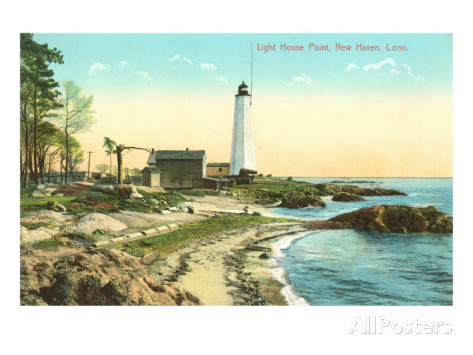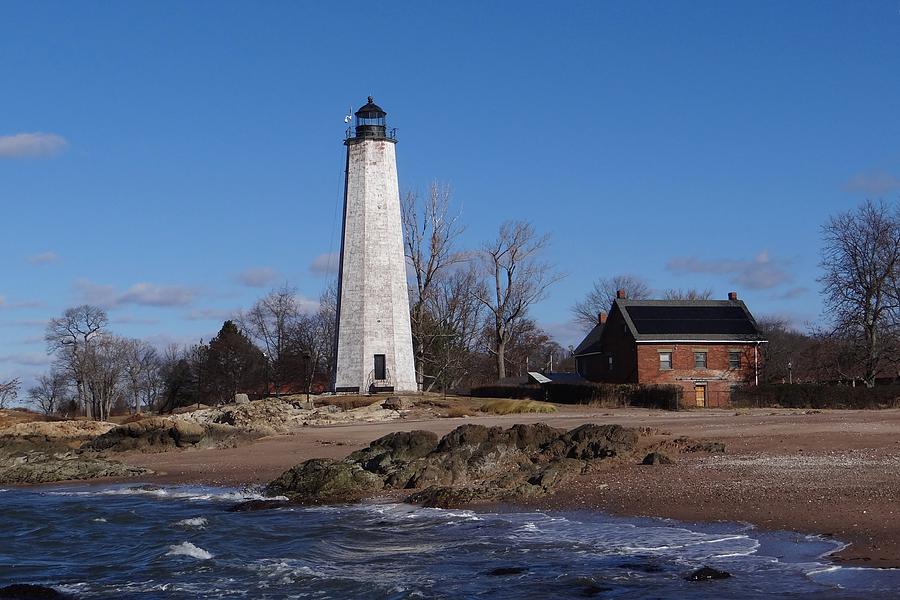By Dan Shine
Voice Columnist

Maritime Series, Part III
See part 1 | part 2 | part 4 | part 5 | part 6 | part 7
New Haven’s Lighthouse
When we look across New Haven Harbor on a clear day, it is easy to spot the white monolith of the Lighthouse at Five Mile Point, so named for its distance from downtown New Haven. A lighted beacon shone from that spot for 73 years–but not always from the structure that we see there today.
From the earliest days of the European settlers, New Haven has been a significant trading port for the East Coast and the West Indies; and also from those earliest days, the shale outcroppings of Lighthouse Point, or Five Mile Point have been a significant hazard for vessels entering and leaving the harbor.
Thus, New Haven had to have a lighthouse. The original small, shingled structure was made of wood in 1805; it was but thirty feet tall, and its simple beacon was lit with a whale oil flame. The light was visible from a distance of 5-12 miles, depending upon conditions.

In 1847, a second lighthouse was built on the same spot, at a cost of $10,000. Like the other Connecticut lighthouses, it was octagonal in shape. Its beacon was magnified by a brand-new technology—it used a fourth-order Fresnel lens. The new lighthouse, made of East Haven sandstone, was 65 feet tall, and rose 97 feet above sea level. This structure served as New Haven Harbor’s lighthouse until 1877, when the Southwest Ledge light was built on the present site of one of New Haven Harbor’s breakwaters.
The lighthouse keeper and his family lived in a brick structure that is adjacent to the lighthouse; this was connected to the lighthouse itself by a wooden passageway, which has long since disappeared. In general, lighthouse keepers had large families; the keeper was responsible for maintaining the lights, mirrors, brasswork, and taking care of any other details that would keep the beacon visible–without fail–each and every night. The lighthouse keeper’s wife earned extra money from the neighbors by performing light housekeeping for them (sorry, bad joke).
It wasn’t an easy life; maintaining the light could become downright hazardous to the lighthouse keeper during high winds and foul weather.
In 1924, the City of New Haven purchased the now-defunct lighthouse, along with its land and buildings, and Lighthouse Point Park was created; the park has operated continuously ever since. During the 1920s, the park and its ball field attracted baseball legends Babe Ruth and Ty Cobb. Today, the grounds are open year-round, but the lighthouse itself is usually closed; park rangers do open the lighthouse on a limited basis for tours. That park, as it should be noted, is one of the most popular spots for bird watching along the entire East Coast.
Thus, The Lighthouse, a New Haven landmark, continues to stand, and hearkens back to the glorious days of New Haven’s maritime heyday—days of adventure and romance, when wooden ships traveled under the power of sail and steam.